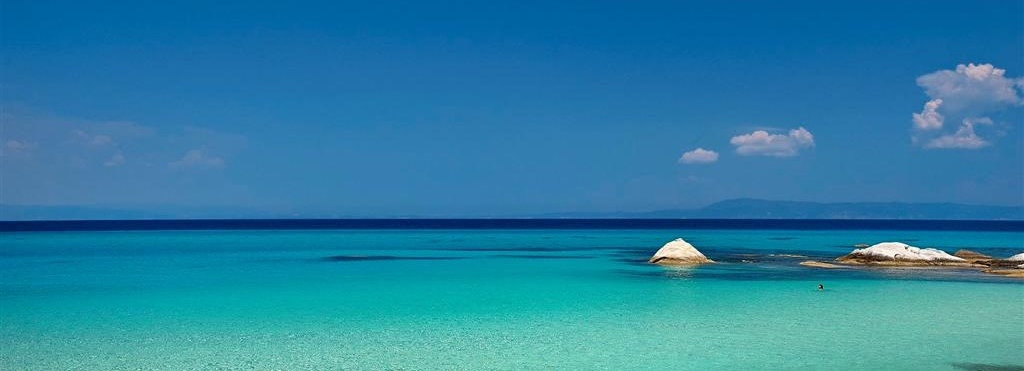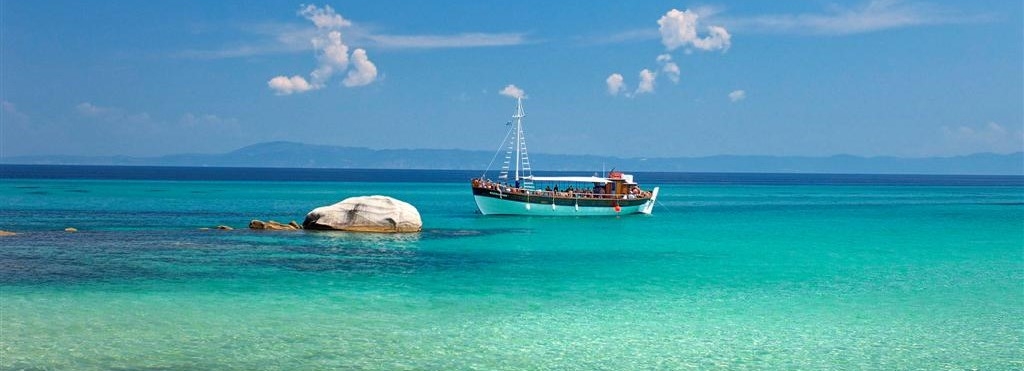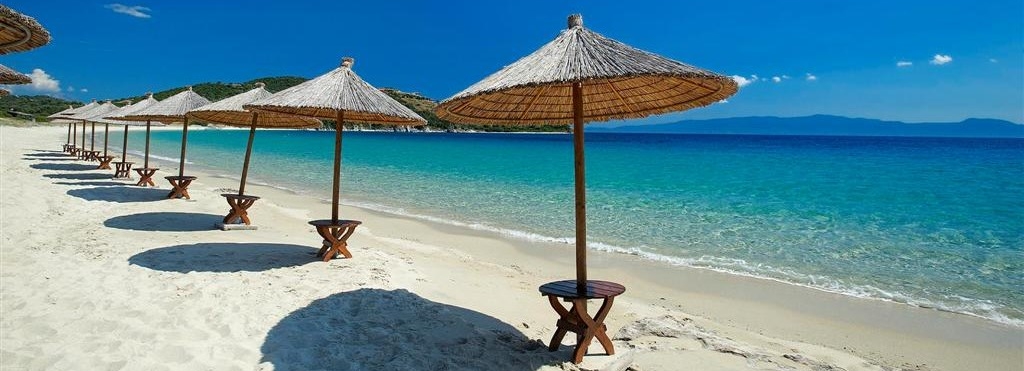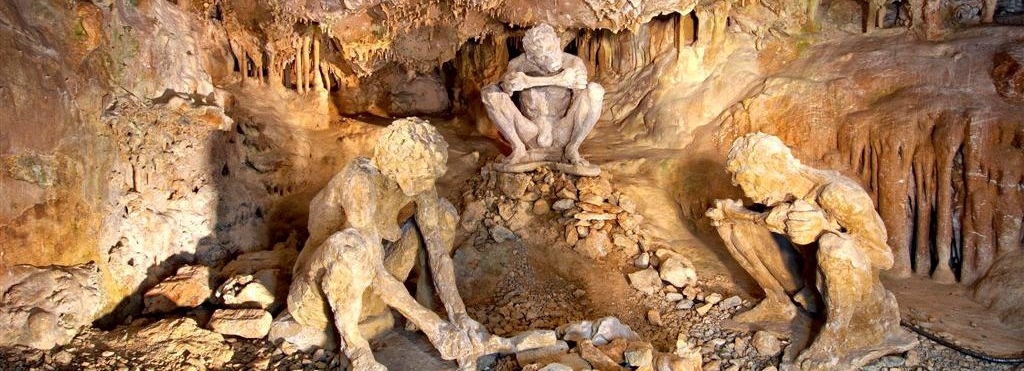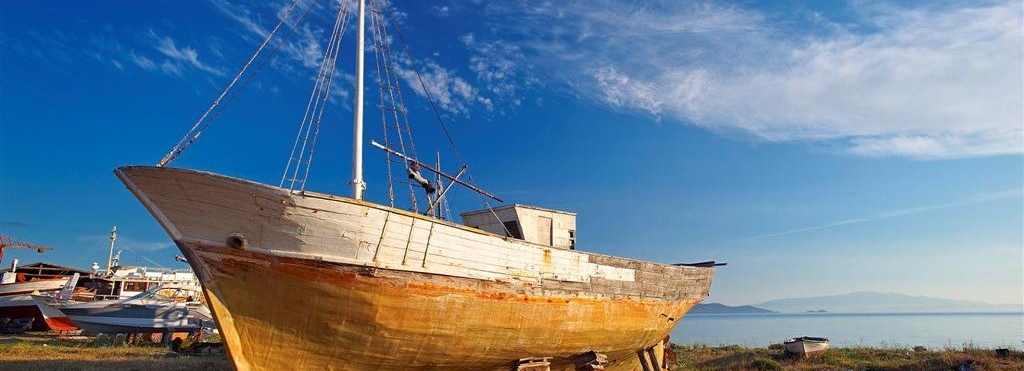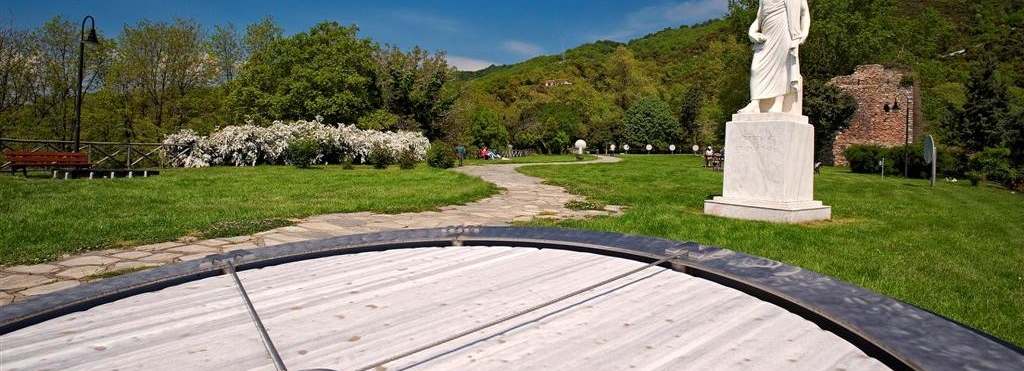THIRD MONASTERY
On the ruins of the ancient city Kleonae, in a peaceful and tranquil landscape on the northeastern side of the peninsula of Athos stands the famous great Monastery Iviron. This holy monastery was founded by St. Ioannes the Iberian at the end of the 10th century AD, just after the monasteries of Megiste Lavra and Vatopedi. Ioannis Tornikos is cited amongst the monastery’s founders – initial benefactors, who was, prior to becoming a monk, a lord chamberlain to the court of David, Russian ruler of the area then known as Iberia (present day Russian Georgia). Tornikos will interrupt his monastic life, following a request by Emperor Basil II and will help the Emperor crush the rebellion led by General Bardas Skleros. After completing his mission, Tornikos will rejoin the monastic order and enjoying the gratitude and material help of Emperor Basil will begin building a new Monastery, close to the ruins of an older monastery, erected by Clement. This new monastery, due to the origins of its founders, shall be named Iviron Monastery (Georgian monastery) and a great number of Georgian and Russian monks will join its ranks in the first centuries of its flourishing. The monastery will soon grow, acquiring monasteries and dependencies outside of Athos until it too will face the Catalan raids and Unificationists’ pogroms in the 13th and 14th century. In 1821 the monastery participates in the national struggle by donating part of its holdings to finance the revolution. National Martyr Patriarch Gregory V became a monk here for a brief period. In its modern history the monastery will suffer extensive fire damages in 1845 and 1865 and parts of it were completely rebuilt. Its Catholicon is dedicated to the Dormition of the Mother of God. The monastery possess of many notable heirlooms and a rich library. The miracle working icon of Our Lady Portaitissa is kept in one of its 17 chapels, an icon evoking many legends and traditions. The Skete of Prodromos is subject to Iviron Monastery.
SECOND MONASTERY
The establishment of the Great and Holy Monastery of Vatopedi is historically placed around 980AD. Its founders are considered to be three monks from the Monastery of Megiste Lavra who, following the orders of their Prior, St. Athanasius arrived in the picturesque area of the Mountain’s northeastern side and by joining some preexisting cells, founded the monastery. Its name is probably derived from the known tradition of the rescue of the son of Theodosius the Great, Arcadius, who scuttled near Mt. Athos and was found safe close to a brier (in Greek vatos), many of which can be found in the valley surrounding the monastery. This is the second, in hierarchical order, monastery of Athos, while in the 2nd Typikon of Athos, dating from 1046, it is already cited as second in monastery hierarchy. The monastery shall flourish greatly and will be supported by the Byzantine Dynasty of Komnenoi. However, it will later also suffer major destructions as a result of the raids by Catalan pirates as well as pogroms by the Unificationists. During the Ottoman rule the monastery will fall into decay. Under the burden of its own problems and heavy Turkish taxation, it will be forced to abandon cenobic life and adopt the idiorrhythmic organization, in parallel selling many of its estates. The monastery will flourish once more in the 18th century. With donations by Patriarchs, citizens and leaders of the regions on the banks of Danube the monastery overcame its problems and, indeed, operated, its own care and expenses, the Athonite Academy, the ecclesiastical school on Mt. Athos. The Hilandar monastery evolved from a cell adjunct to Vatopedi. At the end of the 12th century, the monastery donated the small cell of Helandari to prince of Serbia Stephan Nemanja and his son Rastko, who came to Athos to become monks under the names “Symeon” and “Sava”. The Catholicon of the monastery dates from the 10th century and is a three-cornered church with a dome. It is dedicated to the Annunciation of the Mother of God. Two sketae are subject to the monastery: the Skete of St. Demetrius, idiorrhythmic, with a very small number of huts, and the Skete of St. Andrew, which is known, on account of its size, as “Seraglio”. To the monastery belong many remarkable heirlooms and icons, the most important being its mosaics, amongst the oldest in Mt. Athos, the illustrated manuscripts and the most important treasure of the Virgin’s Holy Belt.
FIRST MONASTERY
Megiste (Great) Lavra, the first and grandest of the monasteries on Mt. Athos, it has its roots in the beginnings of communal monasticism on the peninsula of Athos. Its founder was Athanasius the Athonite, who will reach the land as a monk from the monastery of Kymina on Mt. Olympus in Bithynia in Asia Minor. With the material help from his friend, Byzantine Emperor, Nikephoros Phokas, Athanasius laid the foundations of the monastery of Lavra in 963AD on the southeastern side of the land of Athos. The monastery soon grew and with the help of Phokas and his successor John I Tzimiskes it will develop and acquire many important dependencies and oblations. Soon its monks will exceed the original number of 80 for whom Great Athanasius had originally built the monastery. In the 11th century the Monastery was home to more than 700 monks with corresponding buildings and being the Athonian model of cenobitic monastic life. The history of the monastery will follow the fate befalling all of Mt. Athos. After a period of flourishing, which will last until the 14th century, it will face pirate raids and poor finances, due to excessive Ottoman taxation. Faced with this hard reality, the monastery will adopt a peculiar form of organization and will witness the dawn of the 17th century with very few monks, but still retaining its original glory. A place for the monastic seclusion of Patriarchs and Hierarchs, the Monastery of Megiste Lavra keeps in its vestry and library most notable heirlooms and treasures. The Catholicon (the monastery’s main church) is dedicated to St. Athanasius and stands as one of the most characteristic samples of Byzantine church architecture. The frescoes in the Catholicon were made by renowned painter Theofanis, of the Great Cretan School, and date from 1535, while they are amongst the greatest hagiography samples in Mt. Athos. Today Lavra is the first monastery in the hierarchical order and subject to it are the Sketae of St. Ann, Kavsokalyvia and John the Baptist, as well as the cell of Mylopotamos and also the retreats of Mikra Agia Anna, Karoulia and Katounakia. Its heirlooms include the iron rod and cross of St. Athanasius, the bag and crown of Emperor Nikephoros Phokas, a piece of the True Cross, illustrated manuscripts and many holy vessels.
The twenty holy monasteries on the peninsula of Athos are composite building complexes which were constructed and developed around the Catholicon, the central church of the monastery. These buildings were enclosed by protective walls, by edifices of a fortress-nature, build on the perimeter and with defensive towers in order to overcome various adverse events. Near the Catholicon, which is the center and core of monastic life and is located in the center of the courtyard, we usually find the bell tower and the refectory. This last building is next to the kitchen, the bakery and other auxiliary spaces. Amongst the buildings build on the perimeter we have the wings, housing the monk’s cells, the Guest Quarters for the hospitality of visitors, the Abbot’s office and the Synodicon. There are also the nursing house and the library. In a specially protected space, once in the tower, there is the Icon room and the Vestry, where icons, vessels, heirloom and records are kept. On the ground and basement spaces on the wings we find other auxiliary spaces, such as the krasario (the wine cellar), the candle making facility and ladario, where the monks keep the oil. Outside of the monastery’s courtyard there is the cemetery and cemetery church, the workers’ housing, the stables, the carpenter’s shop, the machine shop and others. The boathouse of the monastery is frequently protected by a tower and complemented by warehouses and other auxiliary buildings. The twenty holy monasteries on Mt. Athos are, in their hierarchical order:
- Great Lavra
- Vatopedi
- Iviron
- Hilandar
- Dionysiou
- Koutloumousiou
- Pantokratoros
- Xiropotamou
- Zografou
- Dochiariou
- Karakallou
- Filotheou
- Simonos Petras
- Agiou Pavlou
- Stavronikita
- Xenophontos
- Osiou Grigoriou
- Esphigmenou
- Agiou Panteleimonos
- Konstamonitou
Up until the 3rd century BC there were many Greek cities on the peninsula of Athos. Later, for unknown reasons, these cities fell into decline or were destroyed and thus the land was desolate for several centuries.
According to mythology the name Athos belonged to some giant from Thrace. In the clash between the gods and the giants, Athos threw a giant rock against Poseidon, but this rock slipped from his hands and fell on the sea, thus forming the land of present day Holy Mountain of Athos.
Tradition has it that Virgin Mary, accompanied by John the Evangelist, on their way to visit Lazarus in Cyprus, encountered rough seas that forced them to temporarily disembark in the port presently occupied by Iviron Monastery. Marveling at the wild landscape Virgin Mary asked her Son to offer her the entire Mountain as a gift. Then the voice of our Lord was heard saying: “Let this place be your lot, your garden and your paradise, as well as a salvation, a haven for those who seek salvation”. Since then Mt. Athos, the Holy Mountain, is considered the plot and garden of Virgin Mary. Human activity reappeared in the 5th century, when the first monks settled here, frustrated at the futility and boredom of everyday life and finding here a beautiful yet uninhabited place, ideal for them to worship God.
The third, easternmost and most captivating peninsula in Halkidiki, the peninsula of Athos is today occupied by the Holy Community of Mt. Athos. This is the only area in Greece completely dedicated to prayer and the worship of God. That’s why it is called Holy Mountain. The Holy Mountain extends over 50 kilometers while its breadth ranges from 8 to 12 kilometers and its area covers roughly 350 square kilometers. The borders of this monastic state are defined, on land, with an imaginable line beginning at the western coast and location “Fragokastro” (Frankish castle) and reaching the cape “Arapis” on the opposite end. There are many marvelous sites in this peninsula. The Mountain Athos dominating on it is a huge cone with a height that reaches 2.033 meters. Its bare peak appears as if spearing the sky, while its slopes, wooded with perennial trees, lend an incomparable aesthetic beauty to this enchanting area.
Administration: Mount Athos is a self-governing part of the Greek State, politically subsumed to the Ministry of Foreign Affairs and religiously under the direct jurisdiction of the Ecumenical Patriarchate in Constantinople.
Territorially it has been divided into twenty self-governed territories. Each territory comprises of a cardinal monastery and various other monastic settlements around it [sketae (cloisters), cells, huts, seats, retreats].
All monasteries are coenobiums of a convent nature, namely there are common masses, prayers, housing and nurishment, while all monks share the work. Head of each monastery is its Abbot, elected by the monks of the monastery for life. The Abbots of each monastery convene for the Holy Convention which exercises legislative authority. Parallel on an annual basis each monastery elects its representative to the Holy Community which exercises administrative authority, while the executive power is exercised by the Holy Administration, which comprises of 4 members selected by the 5 hieratically principal monasteries.
In this beautiful land, the sea seems to be tenderly embracing the land, the green seems to be melting in the blue, while the old assorts the new and man converses with the divine. Mornings are fresh and cool, while sunsets are painted in shades of gold and violet, twilights are idyllic and nightfall is illuminated by thousands of stars. The roads open before you shall take you to unique places where you will surely forget your everyday troubles and relax, before you return to the routine of everyday living. There are no bustling cities here, just modern resorts vibrant with life in the summer, picturesque villages and hamlets. The prefecture’s largest settlement and its capital, Polygyros, has a population of just 6.000. All across this area you will see multi-storey modern hotels, large hotel complexes, many rooms-to-let and apartments, as well as camping sites, the result of the rapid development for tourism in Halkidiki after 1960. In order for you to become better acquainted with Halkidiki we suggest that you follow the proposed five routes.
- For the first route you must follow the road connecting Thessaloniki and Nea Moudania. Taking small diversions you shall visit Nea Kallikrateia, the Cave at Petralona, while you shall complete this tour by making a first acquaintance with the beauty that is the peninsula of Cassandra.
- The second route shall take you along the main road to Sithonia. You will make two diversions, one to visit Agios Mamas and another one to visit Nea Olynthos and the archaeological site of ancient Olynthos. You will also pass through Gerakini, visit Nikiti and from there enter Sithonia while your trip will culminate in Agios Nikolaos and Pyrgadikia.
- The third route shall take you to Halkidiki’s inland. Follow the road connecting Thessaloniki and Polygyros. Marvel at the Monument of Captain Chapsas and visit the monastery of Agia Anastasia (just off the main road). Galatista is your next stop and from there it is worth to take the road up to Vavdos. Backtrack and stop for lunch at the famous restaurants in Agios Prodromos where you can taste the local specialty, skewered meat. Polygyros awaits just round the corner. From there you may continue to visit Taxiarchis and take the wonderful turnpike road through the forest of Mt. Cholomon until you reach Arnaia. Continue on the same road for Stageira and Stratoni, located on the coast of the bay of Ierissos. The road continues to Ierissos and ends in Ouranoupolis.
- For this, the fourth route, you will begin your trip on the northeastern borders of the peninsula of Halkidiki. You will visit Olympiada, Ancient Stageira, Ierissos, Ancient Akanthus and from there Nea Roda and Ouranoupolis, the last settlement before Athos.
- Your journey will culminate in the fifth and final route, which is dedicated to the “Garden of the Virgin”, the holy mountain of Orthodox Christians, Holy Mount of Athos.
In the peninsula of Sithonia and specifically in beautiful Vourvourou you'll be able to enjoy the experience of sea kayaking. The region offers a unique combination of sea and lake characteristics, a mountain covered with thick forests and 9 unique islands visible from the beach which makes it an ideal destination for holidays. Made daily trips by sea kayak accompanied by experienced guides from early May until late October. The daily trips provide a perfect opportunity to paddle in the crystal clear waters around the island Diaporos, the largest of the nine islands which is located across the bay where you can swim and snorkel on some of the most beautiful and remote beaches of Halkidiki, like Krifto, Mirsini and Galazia Nera.
More...
An amazing horseback riding stroll in nature, sure to bedazzle you! Wear your protective helmet, ride on your horse and enjoy an unequaled sense of freedom! Follow your trainer’s instructions and you will be taken for a short stroll inside the ranch in order to become better acquainted with your horse and find the right posture for riding. The magic of the green nature waits for you as your horse trots along breathtaking landscapes! A unique experience that you will always treasure!
Mountain bike on beautiful forest routes, passing through plains, by the lake and by and… in the river. Allow 1:30 to 2 hours for biking, depending on the route you will follow. Available are routes of varying difficulty, depending on the distance and the altitude differences. But regardless of which one you choose, the landscapes greeting you and your fellow bikers will be breathtaking and unique!
A superb 2-hour windsurfing experience for 1. Acquaint yourselves with the exiting world of windsurfing in an ideal setting! This unique sport will bring you in contact with the elements of nature and constitutes an excellent exercise for the body and mind alike! Follow your experienced trainer’s instructions and, after undergoing a brief simulation on land, to save you from many uncalled-for dives, enjoy your first sail on your board in the sea! The sea of Halkidiki awaits you! Have a nice time!
The first form of water ski was aquaplaning, where the athlete ‘slides’ on the water, using a board, the aquaplane, tied behind a ‘speedboat’. Such activities were reported in the area of Volos in Greece as early as 1945-46 using Coastguard boats.
